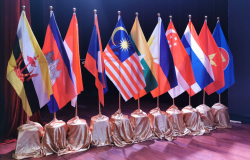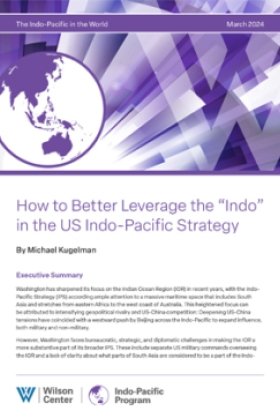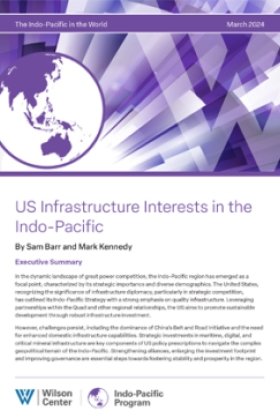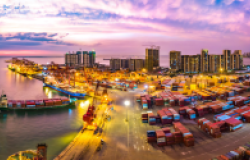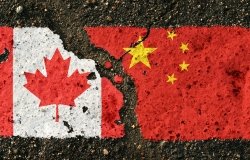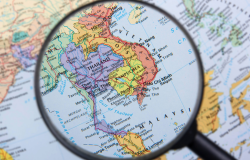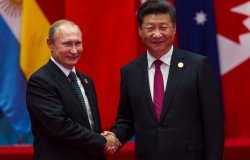Will Trade Suffer From India-Pakistan Tensions?
Several weeks after the horrific attacks in Mumbai, the Pakistan-India relationship remains dangerously tense. In an op-ed in Dawn, Michael Kugelman argues that such fragile relations put growing trade ties between Islamabad and New Delhi at risk—a most unwelcome prospect given Pakistan's chronically poor trade performance and sputtering economy.
With India pointing to a Pakistani connection in last month's Mumbai attacks, the Pakistan-India relationship has grown dangerously tense.
Speculation is now rife about how a rupture in ties would inflame South Asia's tenuous security situation. Indeed, the spectre of renewed sabre-rattling by the two nuclear rivals is worrisome.
However, little has been said about how a breakdown in Pakistan-India relations would undermine trade between the two countries. In light of the Dec 5 decision to postpone trade talks indefinitely, this is a crucial issue, especially for Pakistan. Sustained trade between the two neighbours is central to improving Pakistan's chronically dismal trade performance — and its economy on the whole.
Pakistan's current export model involves sending a small group of low-tech, low-value products (notably textiles and clothing) to an equally small set of destinations (particularly the United States and Europe). This is a recipe for trade performance disaster in a world that relishes sleek, modern technology and hungers for services. Indeed, Pakistan has suffered poor export growth and low export competitiveness for decades. This poor performance bodes poorly for Pakistan's economic prospects, given the difficulty of achieving high macroeconomic growth rates without rising exports.
To attain more export competitiveness and to enjoy better growth, Pakistan must diversify its export portfolio. Healthy trade with India — a nation to which Pakistan presently sends less than two per cent of its exports — constitutes the first step.
Here's why. Prolonged trade activity between Saarc's (South Asian Association for Regional Cooperation) two largest members (in terms of size, population and economy) would spark trade flows throughout South Asia and breathe life into Safta (South Asian Free Trade Area). According to economist Shahid Javed Burki, successful implementation of Safta would nearly triple Pakistan's total trade over the next 10 years. Pakistan-Afghanistan trade would jump fourfold and Pakistan-India trade would increase tenfold.
This vibrant regional trade would generate new export markets, revitalised export sectors (particularly agricultural, banking, services and transport) and more value-added products for Pakistan.
However, if Pakistan-India relations crumble, trade will wither and talk of a more globally competitive trade model could become moot. Consider that:
- Sustained and long-term bilateral trade requires cooperation on regulating cross-border capital flows; developing transport and communication links; joining power grids and pipelines; and sharing airports and ports. If Islamabad and New Delhi stop talking, the political incentives for such cooperation would diminish at best and disappear at worst.
- Cross-border trade requires the uninhibited movement of people and investments. Yet with a beefed-up presence of Pakistani and Indian troops extending from the Line of Control down to border towns off the Arabian Sea, such movement would be difficult. Free and open trade doesn't flourish on a war footing. Any hopes of Lahore becoming a trade hub for towns along India's northern border, or of these border towns profiting from intra-industry trade in manufactured and agricultural goods, would likely be dashed. Similarly, eastern Sindh would have limited opportunities to exploit cross-border trade with western India.
- Adequate security is needed to ensure the free flow of goods. However, shifting Pakistani troops from the NWFP (already one of Pakistan's most lawless and dangerous regions) to the east would create a security vacuum that extremists would quickly fill. The resulting instability would make land transit in this area a major challenge — hampering Pakistan's trade with Afghanistan and minimising opportunities for Pakistan-India cooperation in sharing land transit facilities for Afghan trade.
To be sure, a suspension of Pakistan-Indian ties would not preclude a continuation of informal trade (particularly smuggling). However, informal trade could never transform Pakistan's export model in the same way as open and formal trade.
In the months leading up to Nov 26, trade relations between Islamabad and New Delhi were improving. In July, Islamabad announced it would allow for the import of 136 new items from India. In October, the Line of Control was opened for trade. And on the very day of the Mumbai attacks, Pakistan's foreign minister held peace talks with his Indian counterpart in New Delhi and trade was on the agenda. Perhaps they discussed how Pakistan-Indian trade has surged in recent years — from an average of less than $250m during 2001-03 to more than $1bn in 2006-07.
India and Pakistan must not squander this progress. Despite New Delhi's understandable outrage at what transpired on Nov 26, and despite Islamabad's justifiable pique at being the target of still-unproven accusations, cooler heads must prevail. With coaxing from Washington, Beijing, Riyadh and other influential capitals, Pakistan and India must remain calm and think in terms of resolution, not recrimination. Pakistan's trade prospects and economic health — not to mention South Asian security — hang in the balance.
Related Program

Indo-Pacific Program
The Indo-Pacific Program promotes policy debate and intellectual discussions on US interests in the Asia-Pacific as well as political, economic, security, and social issues relating to the world’s most populous and economically dynamic region. Read more
